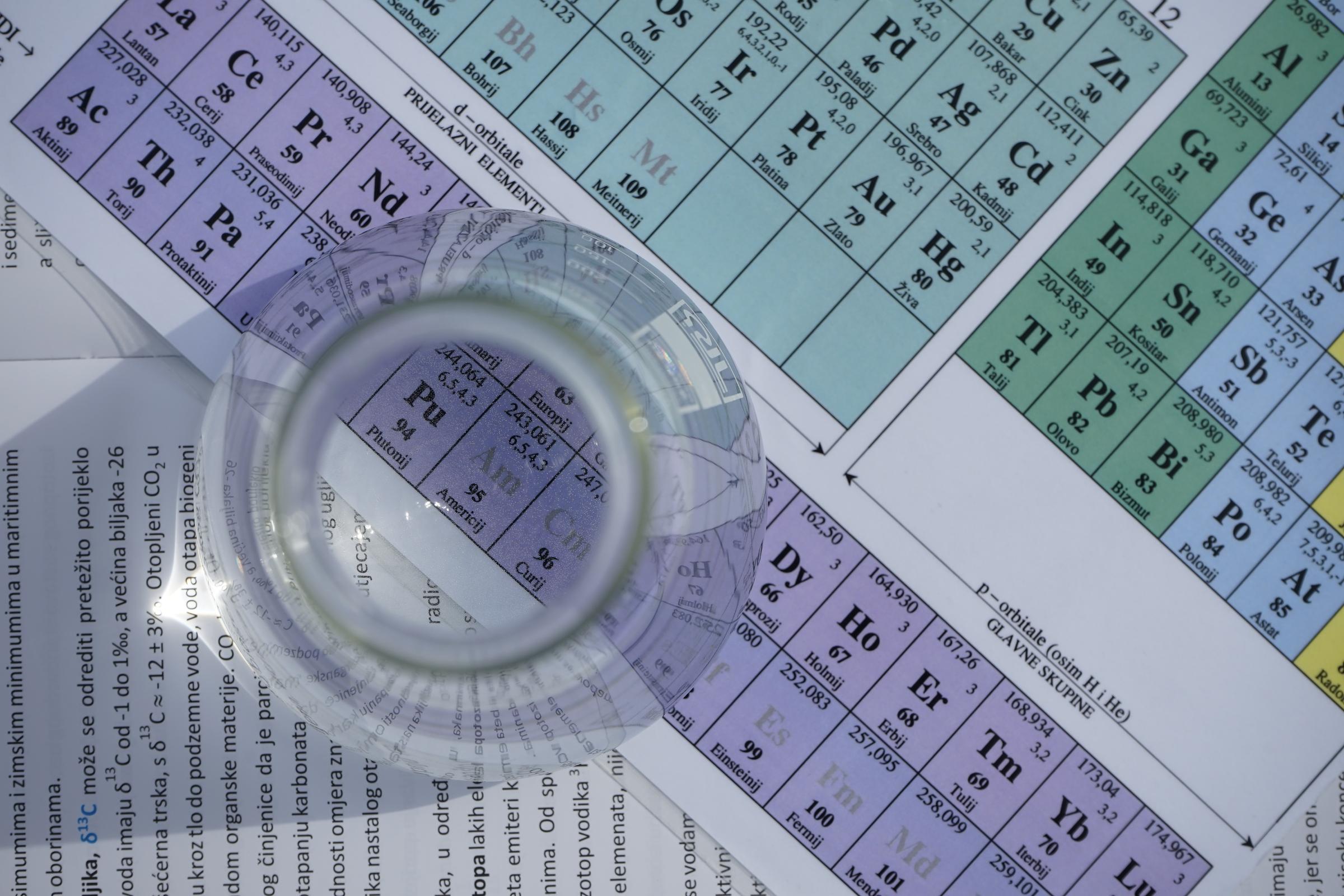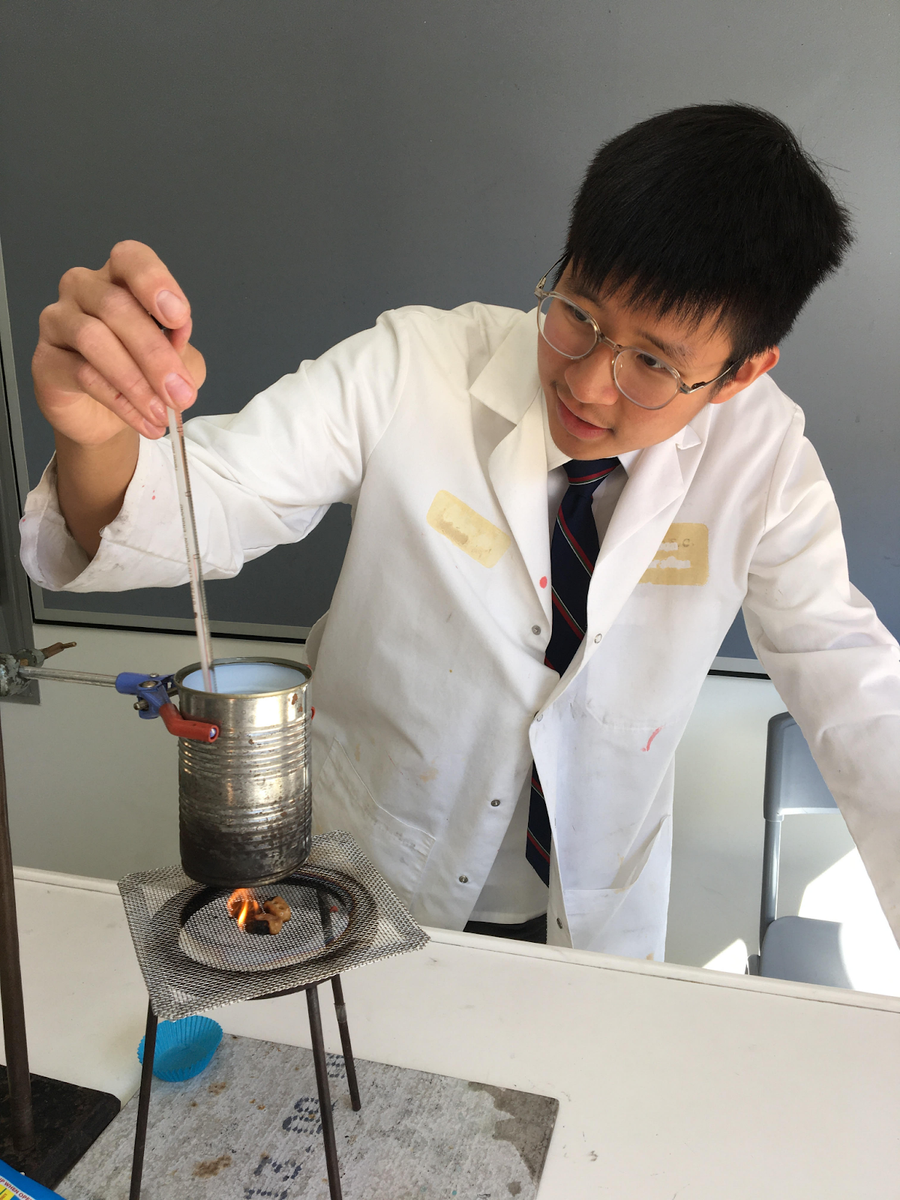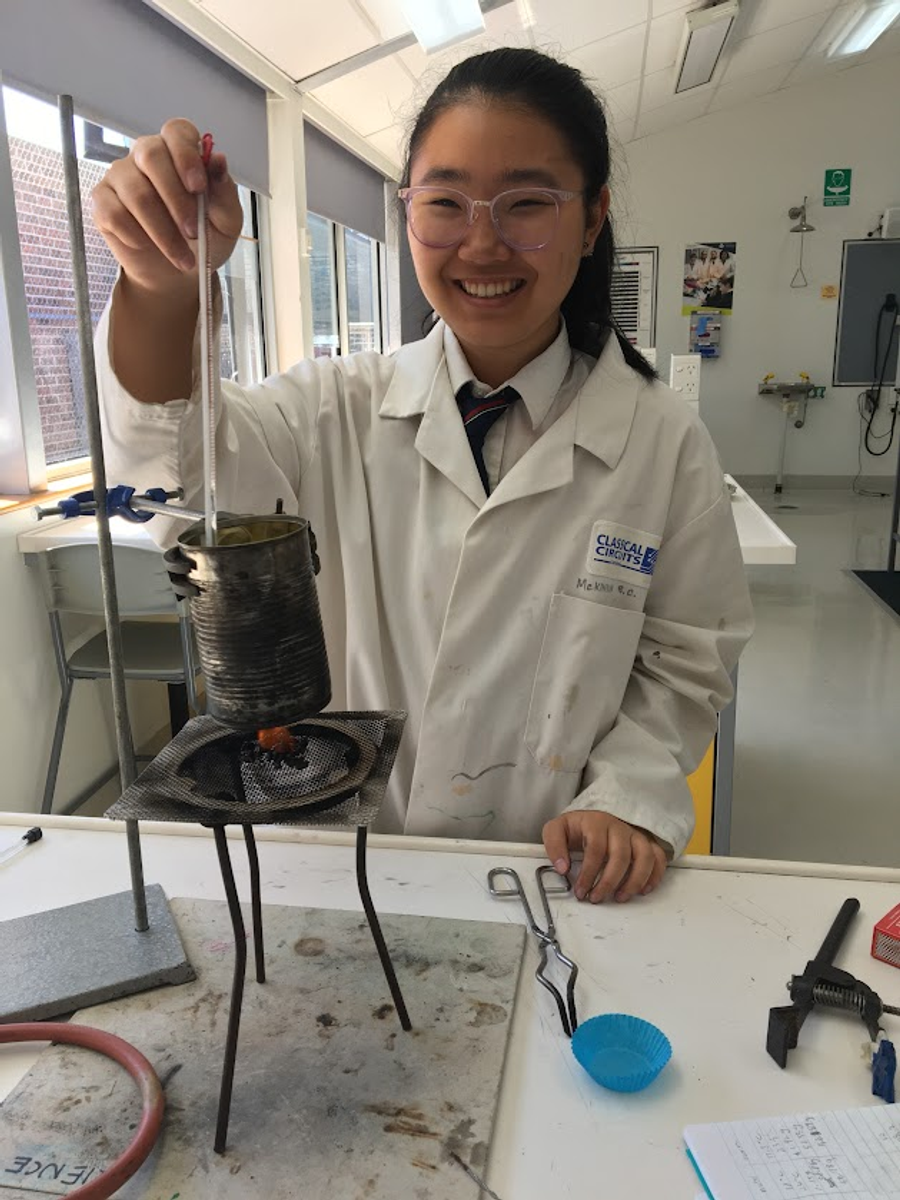SCIENCE

YEAR 12 CHEMISTRY - MEASURING THE ENERGY IN FOOD
Students in Year 12 Chemistry have been working on designing and conducting experiments to measure the energy content of different foods. The findings of these investigations were then communicated in the form of posters.
Below are reflections about these scientific investigations from some of our students.
Fiona Wallis
Science Teacher
Recently, the Year 12 Chemistry classes conducted their Energy from Food experiment, which, for me, was a fascinating and engaging experience. Through this experiment we investigated the relationship between energy and nutrient content like carbohydrate and fat content. Following the basic research on energy in food, we designed our own experiments based on the aim. The results would then be used to help construct our poster after the experiments.
Our group chose to use various types of cereal (Bubble pop and Nutri-grain to name a few) and measured their energy content by combusting them and measuring the rise in temperature of water. This task allowed us to explore chemistry concepts through application in real-life.
Personally, I think what made the experiment special was not only getting to set food on fire, but also learning how to better communicate and cooperate with my group, which made the task even more memorable. Despite the challenges - and the times when the experiment didn’t read the instruction manual - eventually we found ways to improve our methods and discuss our mistakes as a group which, I believe, is the best thing about science - there’s never a dead-end!
Jenny Cheon
This Area of Study we were tasked with conducting our own experiments to investigate how the chemical composition of foods affect the energy contents of foods. This was done by setting up an apparatus to combust samples of foods, such as popcorn, chips and bread, underneath metal cans with water in them, and the energy from the burning food would transfer to the water in the can. Through our chemistry knowledge of how to calculate energy release from combustion reactions using temperature increases in water in these apparatus, we were able to determine the energy contents of foods, which in a lot of cases, the value we found tended to be a lot lower than the actual energy content because of errors. We compared any changes in energy contents of foods to any changes to a specific variable in the foods' chemical composition to determine any potential trends and effects.
Overall, this experiment was very hands-on to conduct and allowed us to further understand how manufacturers find the energy contents of foods that are displayed on their nutrition labels.
Kate Nguyen
For the Area of Study 3 of Chemistry, my group consisting of Morgan Jays, Mark Soloviov, Jana Snetkova and myself (Georgia Linardou), chose to investigate the effect of an increase in fat content of popcorn to its heat of combustion. Hypothesizing that ‘as the fat content of popcorn increases so will the amount of energy released, because lipids are more easily oxidised and so release more energy when combusted’, we began our experiment thrilled to apply the chemical concepts learned in class. We performed our experiment in our double period on Thursday 21 March, and due to the restricted time period, we were prompted to communicate effectively and choose the best way to execute our experiment!
We had the opportunity to integrate our problem-solving skills in a hands-on experience. Despite the limited accuracy of the results due to systematic errors such as heat loss, our hypothesis was supported and the experiment showcased an indication of which popcorn with fat content one should choose, when in need of energy. Ultimately, the AOS3 experiment allowed us to see how chemical concepts extend to everyday life!
Georgia Linardou
From our most common daily breakfast – cereals – we decided to unravel the hidden facts and energy secrets within them. Four distinct types of cereal were selected: Coco pops, Nutri-Grain, Cornflakes, and Rice Bubbles, each boasting varying percentages of essential micronutrients. How? Simply by burning them!
By igniting each cereal sample and measuring the subsequent changes in water temperature, we calculated the energy released and compared it with the change in mass of the cereal. The results were astonishing, revealing notable disparities in energy content among the different cereal types. As expected, Ironman food always contains the highest energy content.
Despite the classroom acquiring a slightly odorous scent towards the end, it was an interesting experiment as we watched the cereal burn and observed the unfolding results.
Jonathan Kui
Towards the end of Term 1, the Year 12 Chemistry students split into small groups to conduct our own experiments on the combustion of foods, and their energy contents. After our first area of study, which focused on how energy is obtained from fuels and foods, all the concepts we had covered in class began to come together as we started to design experiments based on how much energy certain foods release, and why their chemical structure allows them to do so. In our experiments we focused on how much energy foods released when they were burnt, to try and understand how much energy they release when we consume them.
However, we got to essentially design the rest of our experiments within our groups, such as which foods we chose to test and which food groups to focus on through our experimentation, whether that was carbohydrates, fats and oils or proteins. After conducting the experiments over a few lessons, we began to reflect further and put together a written experimental report. Conducting these experiments was incredibly useful to help us conceptualise the content we had been learning in class and apply it to our everyday lives and how we can obtain the optimal amount of energy from the foods we eat.
Gisele Hennequin & Kristiana Vasilakopoulos








